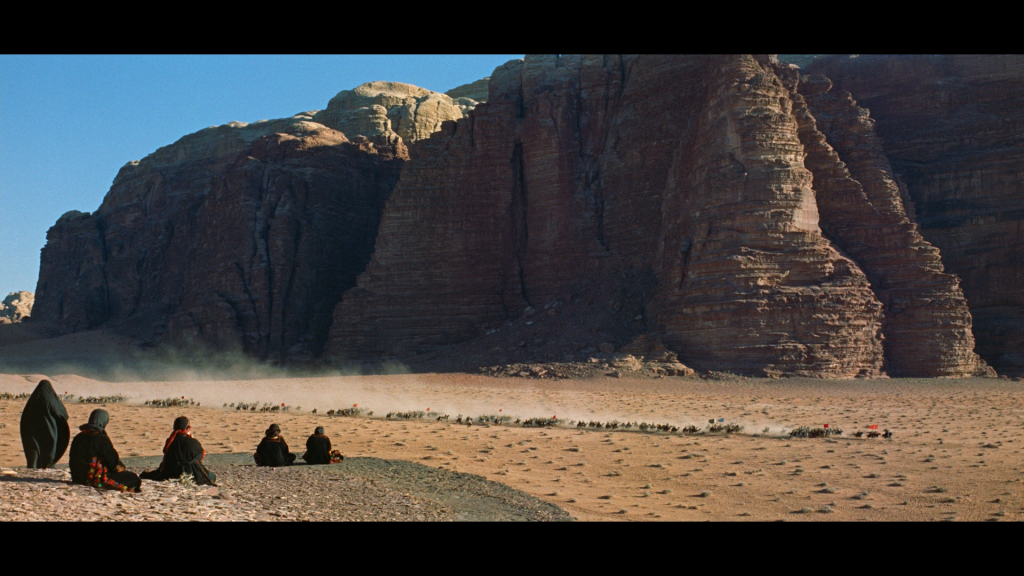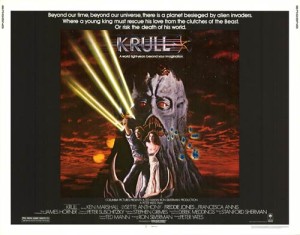Andrew Rostan was a film student before he realized that making comics was his horrible destiny, and he’s never shaken his love of cinema. Every week, he’ll opine on current pictures or important movies from the past.
The Oscar nominations are in for the present. The winners on the 28th will help shape the future of Hollywood. Let’s look back now at the past.
Seeing movies on actual film is an essential part of loving them—one of the only things I admired about The Hateful Eight was Quentin Tarantino’s effort to create an experience you could never recapture in home theaters or digital. The Music Box Theatre, a Chicago institution where we have seen many modern classics and revivals, knows this. It will be hosting its annual 70mm Film Festival from February 19th to March 10th, showing fifteen features on a 41-foot screen with 7.1 channel surround sound, all projected in the greatest format known to humankind.
Needless to say, attending this festival is a strong recommendation, and it runs long enough to give Chicagoans plenty of chances to see a great film. To help you pick, here is our brief guide to what will be shown and what makes it ideal for the 70mm treatment.
DISCLAIMER: Any 70mm film festival worth its salt always shows three movies in particular: the crowd-pleasing West Side Story and two films that earned every superlative thrown at them and fully show off what 70mm can do: Lawrence of Arabia and 2001: A Space Odyssey. I don’t need to write about them. If you’ve never seen them projected in the format, then you are in for the greatest treat of all. The rest of these may not immediately come to mind when you think of musts to see on the big screen.
“Vertigo” (1958): Four years ago (we’ve been going that long), Alex and I wrote at length about Alfred Hitchcock’s masterpiece dethroning Citizen Kane from the top of the Sight and Sound poll. Two months ago, I watched Hitchcock/Truffaut, the outstanding Kent Jones documentary in which Hitchcock himself said his suspenseful romance was full of plot holes and illogic. (Logic “bored him.”) None of this matters, because the obsessive passions of “Vertigo” make it a film you feel much more than nitpick.
WHY TO SEE IT IN 70MM: It’s Hitchcock at his most imaginative and in control. Every camera movement, every use of color, every cue of Bernard Herrmann’s near-perfect score…all of it is perfect
Ghostbusters (1984): Right in time for Paul Feig’s continuation this summer, one of the most beloved films of the 1980s returns. There are some movies on this list I don’t need to say much about, and Ghostbusters is one of them.
WHY TO SEE IT IN 70MM: The climactic destruction of New York is one of the most imaginative and hilarious action set pieces of all time, and a bridge into the modern special effects era. Plus, it’s your only chance to see Bill Murray in 70mm.
 The Master (2012): Before Tarantino, Paul Thomas Anderson led the charge back to 70mm when he filmed his opus inspired by the rise of Scientology in the format and made a puzzling, spellbinding film.
The Master (2012): Before Tarantino, Paul Thomas Anderson led the charge back to 70mm when he filmed his opus inspired by the rise of Scientology in the format and made a puzzling, spellbinding film.
WHY TO SEE IT IN 70MM: Anderson created arguably the most gorgeous imagery of his career in The Master, with its sunlit beaches and post-war residential vistas filmed with loving care. But he mostly uses 70mm to add detail and weight to the interactions of Philip Seymour Hoffman, Joaquin Phoenix, and Amy Adams. Instead of an epic, he creates an intimate Dutch portrait.
Inherent Vice (2014): Anderson followed up The Master by reteaming with Phoenix to adapt Thomas Pynchon’s impenetrable mystery novel. While not in the ranks of PTA’s masterpieces, it is a fascinating film with actors committed to the unusual tone and an outstanding screenplay that brings sense to what could have been senseless.
WHY TO SEE IT IN 70MM: There are two surefire ways to feel like you are on an immersive drug trip without doing drugs, and one is to watch Inherent Vice in theaters, with is dreamy, hazy, uncertain-feeling picture and sound washing over you like the waves outside Doc Sportello’s house. (The other is to watch Fear and Loathing in Las Vegas, any time at all.)
The Wild Bunch (1969): Sam Peckinpah’s extraordinary Western starring a rarely better William Holden, Ernest Borgnine, and Robert Ryan in a saga of aging crooks in a world overtaken by technological and political revolution is the perfect capstone to the sixties: brutally violent, nihilistically comic, and with a strange but real, heartfelt sentimentality.
WHY TO SEE IT IN 70MM: BLOOD. So much blood. Blood and destruction as it had never been seen in film before. (The final ten minutes in particular.)
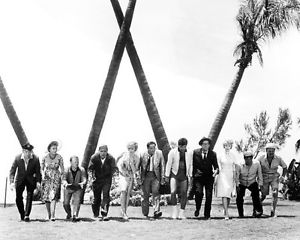 It’s a Mad, Mad, Mad, Mad World (1963): The gifted but frequently annoying Stanley Kramer took a short break after Judgment At Nuremberg from making middlebrow liberal message movies to helm the largest comedy ever made. A cryptic message from dying crook Jimmy Durante sends an assortment of strangers on a quest for buried treasure, not knowing that Durante’s policeman rival Spencer Tracy is watching. The film is three-plus long, sometimes malingering hours crowded with pointless cameos, but…
It’s a Mad, Mad, Mad, Mad World (1963): The gifted but frequently annoying Stanley Kramer took a short break after Judgment At Nuremberg from making middlebrow liberal message movies to helm the largest comedy ever made. A cryptic message from dying crook Jimmy Durante sends an assortment of strangers on a quest for buried treasure, not knowing that Durante’s policeman rival Spencer Tracy is watching. The film is three-plus long, sometimes malingering hours crowded with pointless cameos, but…
WHY TO SEE IT IN 70MM: People who love physical comedy will thrill at seeing some of the most elaborate slapstick routines ever devised and filmed with pristine, elaborate care, from Jonathan Winters destroying a gas station to Mickey Rooney, Buddy Hackett, and a drunk Jim Backus flying a plane to Phil Silvers on a road to nowhere to a final knockabout chase.
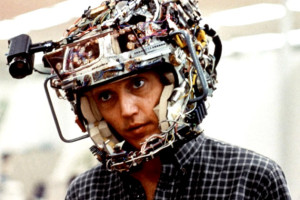 Brainstorm (1982): Douglas Trumbull, the man who masterminded 2001’s special effects (as well as those for Close Encounters of the Third Kind, Blade Runner, and The Tree of Life), directed this 1982 film in which Christopher Walken and Natalie Wood create a machine that can record people’s thoughts and emotions. It was a box-office flop unfortunately remembered today as Wood’s final movie, as she died her mysterious death partway through production.
Brainstorm (1982): Douglas Trumbull, the man who masterminded 2001’s special effects (as well as those for Close Encounters of the Third Kind, Blade Runner, and The Tree of Life), directed this 1982 film in which Christopher Walken and Natalie Wood create a machine that can record people’s thoughts and emotions. It was a box-office flop unfortunately remembered today as Wood’s final movie, as she died her mysterious death partway through production.
WHY TO SEE IT IN 70MM: Look at Douglas Trumbull’s credits again. He was a filmmaker of singular imagination and he intended Brainstorm to be his crowning opus: he developed a process called Showscan that could shoot in 70mm at 60 frames per second for the film. MGM/UA wouldn’t let him use it, but he still managed to create a sensory virtual reality so intense that when characters died on screen from playing back the recordings alone, audiences believed it. Plus, Christopher Walken in 70mm.
Krull (1983): Columbia Pictures had overcome the David Begelman scandal and won a Best Picture Oscar for Gandhi, so they were ready to think big. Hence a film that merged Star Wars and the coolest Dungeons and Dragons adventure ever, directed by Peter Yates (Bullitt, The Friends of Eddie Coyle, Breaking Away), and with a budget far surpassing Return of the Jedi’s that year. It flopped. It has been described by acclaimed comics writer Chris Northrop as “life changing badness.”
WHY TO SEE IT IN 70MM: This was the first movie I bought a ticket for. Though silly, Krull boasted a production design by longtime John Huston-Sydney Pollack collaborator Stephen Grimes that spared no expense and blended fantasy, sci-fi, and surrealism, as well as beautiful, understated Yates direction and spectacular effects. Plus there’s a young Liam Neeson and a super-weapon called the Glaive!
Those Magnificent Men in Their Flying Machines (1966): This 20th Century-Fox movie was ahead of its time: not for any artistic advancements, but for the idea of making a big-budget, unserious spectacle with thrilling effects and a cast made up of stars from around the world getting mainstream American exposure. And it worked: with seasoned Ken Annakin at the helm, the movie grossed five times its cost.
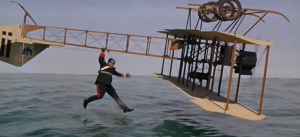 WHY TO SEE IT IN 70MM: The air race between London and Paris, with outstanding aerial photography of planes recreated to match 1910s specifications, is one of the grandest action sequences ever put to film.
WHY TO SEE IT IN 70MM: The air race between London and Paris, with outstanding aerial photography of planes recreated to match 1910s specifications, is one of the grandest action sequences ever put to film.
Interstellar (2014): Christopher Nolan’s saga of wormholes, time travel, and hard science of a dubious nature, with some of our greatest actors (McConaughey, Hathaway, Chastain, and Nolan’s ubiquitous wise man Michael Caine) embarking on a less interesting journey beyond the infinite.
WHY TO SEE IT IN 70MM: Nolan decided to shoot parts of the film in 70mm for IMAX release, and the combination of 850 special effects shots and Hoyte van Hoytema’s artfully composed cinematography make it a perfect example for the format, even if the film leaves one iffy.
Starman (1984): Before he was the Dude, Jeff Bridges was one of the most charming leading men in Hollywood, and he received his first Oscar nomination as Best Actor for this offbeat romantic sci-fi film about an alien with extraordinary powers who crashes on Earth and enlists young widow Karen Allen to help him reunite with his brethren.
WHY TO SEE IT IN 70MM: John Carpenter. Yes, that John Carpenter. He wanted to show he could do more than scare the pants off people and make films that twisted genres to the limit and signed on to make this as his follow-up to The Thing and Christine. If you’ve ever wanted to see what Carpenter was capable of on a larger canvas, then this is your chance.
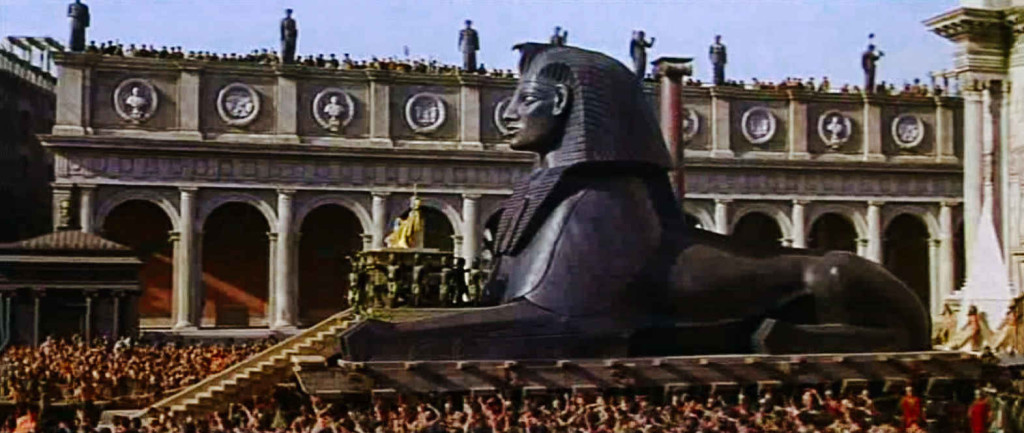 Cleopatra (1963): Joseph L. Mankiewicz, one of the greatest writer-directors ever, decided to enter the 1960s by masterminding an ambitious epic…and found himself shipwrecked by one of the most troubled, scandalous, and wildly overbudget productions ever. But truth be told, the four-hour film offers a multitude of compelling sequences and four terrific leading performances by Elizabeth Taylor, Richard Burton, and their overshadowed co-stars Rex Harrison and Roddy McDowall.
Cleopatra (1963): Joseph L. Mankiewicz, one of the greatest writer-directors ever, decided to enter the 1960s by masterminding an ambitious epic…and found himself shipwrecked by one of the most troubled, scandalous, and wildly overbudget productions ever. But truth be told, the four-hour film offers a multitude of compelling sequences and four terrific leading performances by Elizabeth Taylor, Richard Burton, and their overshadowed co-stars Rex Harrison and Roddy McDowall.
WHY TO SEE IT IN 70MM: This was the studio system dying in not merely a blaze but a California wildfire of glory. The sets, the costumes, the battle sequences; everything defines “opulent” and “majestic” as only Old Hollywood could.
Images from movie poster.com, Forgotten Film Cast, The Verge, Chaostrophic, Fog’s Movie Reviews, rogerebert.com, and eBay.

